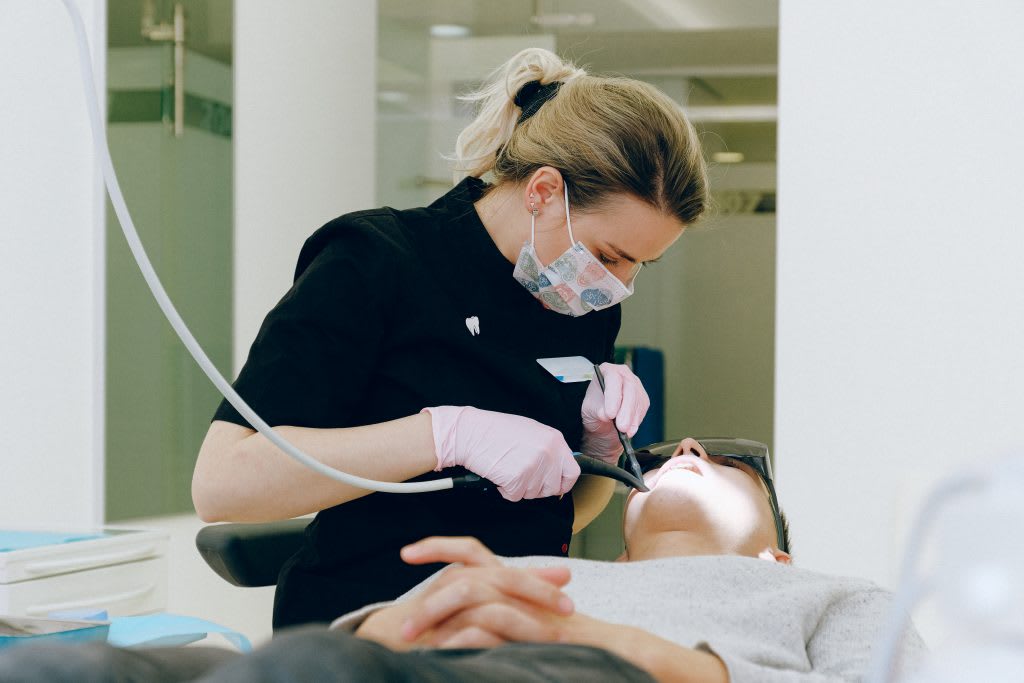
Healthy and beautiful smile can go a long way in boosting your confidence and making great first impressions. However, maintaining good oral health goes beyond just brushing and flossing regularly. As much as we all want to flaunt our pearly whites without fear or embarrassment, dental problems such as tooth decay, gum disease, bad breath, sensitivity and even oral cancer can be quite common. We will provide you with practical tips on how to prevent these issues from affecting your teeth and overall health. Let's dive into some essential information every person should know for optimal dental hygiene!
Tooth Decay (Cavities)
Tooth decay, also known as cavities, is one of the most common dental problems that people face. Cavities occur when bacteria in your mouth produce acid that eats away at the enamel on your teeth. This can result in tiny holes or pits forming on the surface of your teeth.
Poor oral hygiene habits such as not brushing and flossing regularly can lead to tooth decay. Additionally, consuming sugary and acidic foods and drinks contributes to the formation of cavities.
If left untreated, cavities can cause a variety of complications such as toothaches, sensitivity to hot and cold temperatures, bad breath and even infections.
The good news is that you can prevent tooth decay by maintaining proper oral hygiene habits such as brushing twice a day with fluoride toothpaste and flossing daily. You should also limit your consumption of sugary foods and drinks like candy, soda and juice.
Moreover, regular visits to your dentist for check-ups are essential in preventing dental issues like cavities from developing into more severe problems that may require extensive treatment.
Gum Disease (Gingivitis and Periodontitis)
Gum disease, also known as periodontal disease, is a common dental problem that affects the gums and tissues surrounding the teeth. There are two types of gum disease: gingivitis and periodontitis.
Gingivitis is characterized by red, swollen gums that bleed easily when you brush or floss your teeth. It is caused by plaque buildup on the teeth and can be reversed with proper brushing and flossing techniques.
Periodontitis, on the other hand, occurs when gingivitis is left untreated. The infection spreads to the bone supporting the tooth causing it to loosen or fall out. Symptoms include bad breath, receding gums, loose teeth, and changes in bite patterns.
Prevention of gum disease involves regular dental visits for cleanings and check-ups every six months. Brushing twice daily with fluoride toothpaste for at least two minutes along with daily flossing will help remove plaque buildup from teeth surfaces where brushes cannot reach.
Maintaining healthy habits like quitting smoking or tobacco use can also reduce risk factors associated with gum diseases such as diabetes or heart disease which are often linked to periodontal infections.
Bad Breath (Halitosis)
Bad breath, also known as halitosis, is a common dental problem that affects many people. It can be caused by a variety of factors such as poor oral hygiene, certain foods and drinks, smoking or underlying medical conditions.
One of the most common causes of bad breath is poor oral hygiene. When we don't brush and floss regularly, bacteria in our mouth can build up and produce foul odor.
Additionally, certain foods like garlic and onions can leave a lingering smell on our breath for hours after consumption. Smoking is another major cause of bad breath as it not only leaves an unpleasant odor but also dries out the mouth which leads to bacterial growth.
In some cases, bad breath may be a symptom of an underlying medical condition such as gum disease or dry mouth syndrome. If you experience persistent bad breath despite good oral hygiene practices, it's important to consult with your dentist or doctor.
To prevent bad breath from occurring in the first place, regular brushing and flossing are essential along with drinking plenty of water throughout the day to keep the mouth hydrated. Chewing sugar-free gum or using mints may provide temporary relief but won't solve the root cause of the problem.
Maintaining good oral hygiene habits and addressing any underlying health issues are key steps in preventing chronic bad breath.
Tooth Sensitivity
Tooth sensitivity is a common dental problem that affects many people. It occurs when the enamel on your teeth wears down, exposing the sensitive nerve endings inside. This can cause discomfort or pain when consuming hot or cold foods and beverages.
There are several causes of tooth sensitivity, including brushing too hard, grinding your teeth, and gum recession. It can also be caused by certain types of dental treatments such as teeth whitening or fillings.
Fortunately, there are ways to prevent and treat tooth sensitivity. One way is to use a toothpaste specifically designed for sensitive teeth. These toothpastes contain ingredients that help protect the nerve endings in your teeth from exposure to hot or cold temperatures.
Another way to prevent tooth sensitivity is to practice good oral hygiene habits. Brushing twice a day with a soft-bristled brush and flossing regularly can help keep your gums healthy and reduce the risk of gum recession.
If you already have sensitive teeth, there are still treatment options available. Your dentist may recommend desensitizing treatments such as fluoride varnishes or bonding agents to help strengthen your enamel and reduce sensitivity.
It's important not to ignore any signs of tooth sensitivity as it could indicate an underlying issue with your dental health. By taking preventative measures and seeking treatment if necessary, you can alleviate discomfort and maintain optimal oral health.
Oral Cancer
Regular dental check-ups are essential for maintaining good oral health and preventing common dental problems. One of the most crucial reasons for regular dental visits is to detect oral cancer at an early stage.
Oral cancer can affect any part of the mouth, including the lips, tongue, cheeks, floor of the mouth, hard and soft palate, sinuses and throat. The symptoms may include persistent sores in your mouth or on your lips that do not heal even after several weeks; red or white patches in the mouth; difficulty swallowing or speaking; a lump or thickening in your cheek; numbness in your tongue or other parts of your mouth.
The risk factors associated with oral cancer include tobacco use (smoking cigarettes, cigars, pipes), excessive alcohol consumption over an extended period (more than two drinks per day), human papillomavirus infection (HPV) and prolonged exposure to sunlight without protection.
Early detection is key to successful treatment outcomes for oral cancer. During routine dental exams, dentists will look out for signs of potential issues like lumps or lesions on tissues inside the mouth. If anything suspicious is found during these exams further testing such as biopsy may be recommended.





Comments
There are no comments for this story
Be the first to respond and start the conversation.